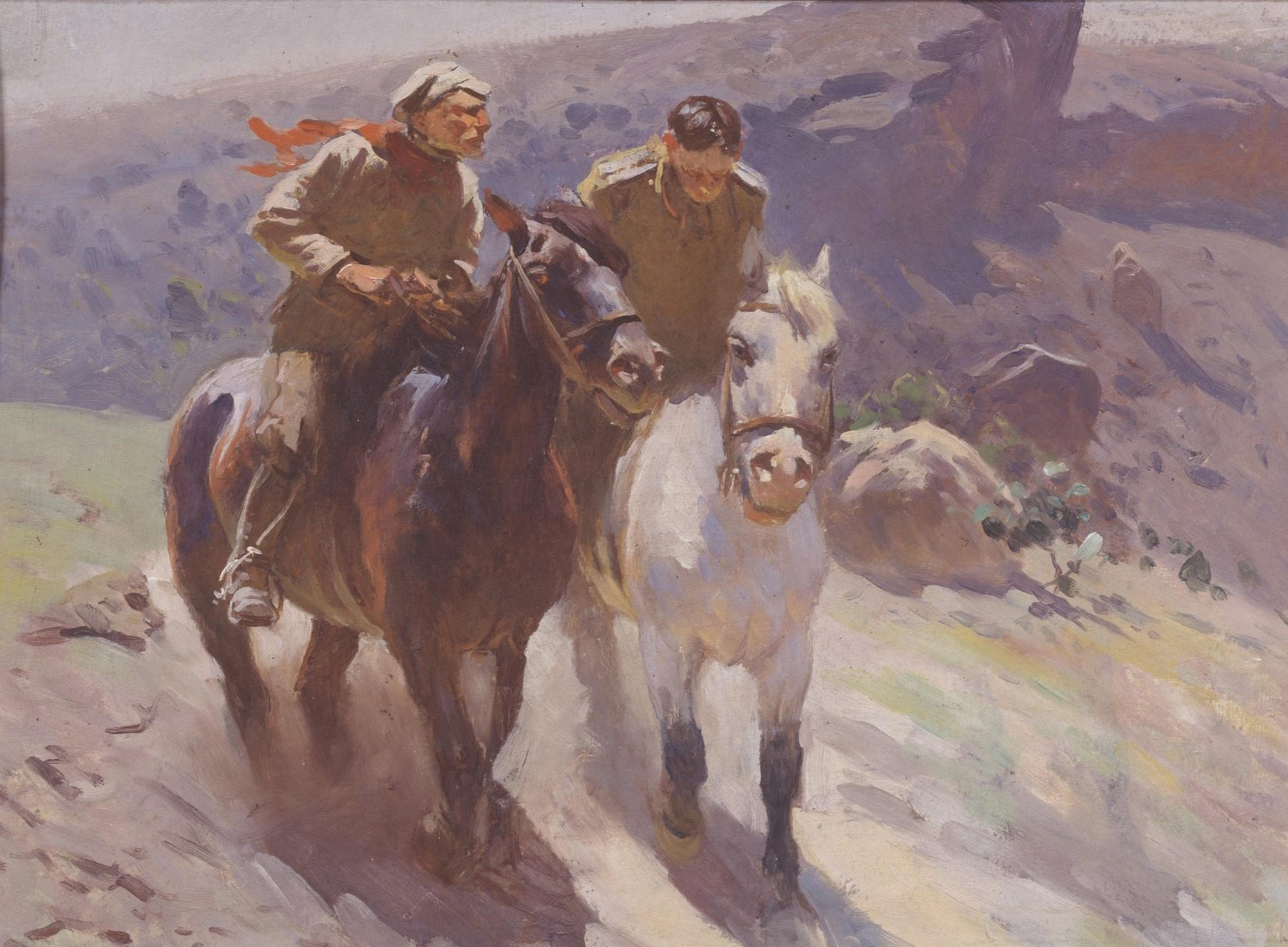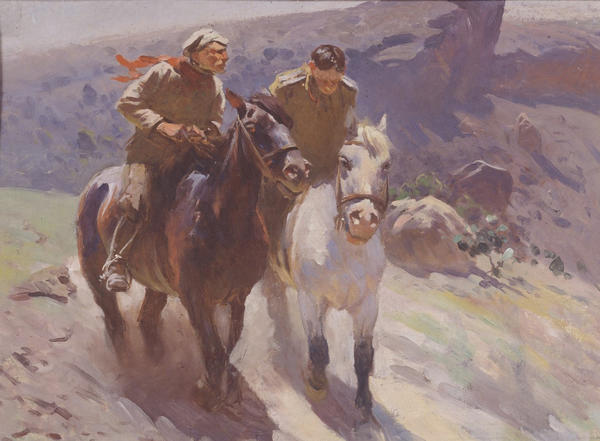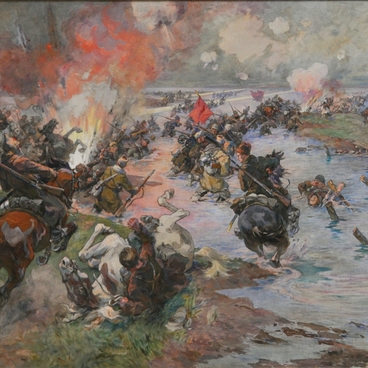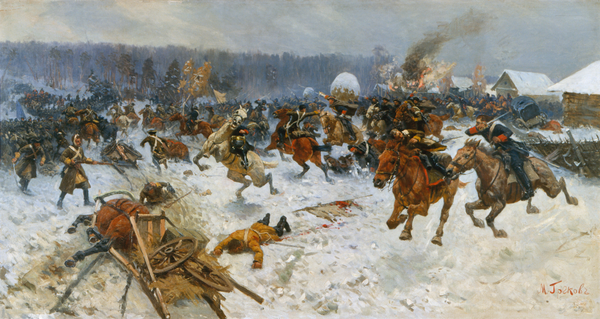The Captive White Guard was painted by Mitrofan Grekov three years before his death, in 1931. Each of Grekov’s work is a proof of startling determination and integrity.
Having been at the front of the First World War, Grekov brought back a large number of sketches. In his work there are no other themes and motives other than the battles of the Red Army during the Civil War. Grekov’s compositions always had a striking distinguishing feature - he painted his creations, relying not on historical data, archives or literary narratives, but on his own impressions and emotions.
Having been at the front of the First World War, Grekov brought back a large number of sketches. In his work there are no other themes and motives other than the battles of the Red Army during the Civil War. Grekov’s compositions always had a striking distinguishing feature - he painted his creations, relying not on historical data, archives or literary narratives, but on his own impressions and emotions.
The depicted scene Captive White Guard represents the difficult era as well as possible. Everything is very mundane in it, there is no false pathos, and at the same time, authenticity and truthfulness are clearly felt.
In the painting, a Red Army fighter accompanies a captive enemy on a horse. The artist managed to render the emotions of the characters - the victorious appearance of the Red Guard contrasts sharply with the prisoner’s dejectedness.
The painter was born in a Cossack family, on the farm Sharpaevka in Yanovskaya volost. His name at birth - Mitrofan Pavlovich Martyshchenko.
Since 1898, Grekov studied at the Odessa Art School, then, in 1903, he entered the Academy of Arts in St. Petersburg. There, his mentors were Ilya Repin and Franz Rubo known for his works in the battle genre.
The painter was born in a Cossack family, on the farm Sharpaevka in Yanovskaya volost. His name at birth - Mitrofan Pavlovich Martyshchenko.
Since 1898, Grekov studied at the Odessa Art School, then, in 1903, he entered the Academy of Arts in St. Petersburg. There, his mentors were Ilya Repin and Franz Rubo known for his works in the battle genre.
Mitrofan Borisovich began serving time in the army in 1912, and with the outbreak of World War he went off to war.
He was in the war until 1917, then he was demobilized and got a job as a teacher in Novocherkassk, where he created a pilot series of paintings dedicated to the victory over the White Army. The works of this period are considered to be fundamental in the battle painting of the USSR. The painter rendered in them not only the fighting and battles, but also the vivid characters and emotions of the Red Army soldiers.
In 1923, Grekov completed the painting In the Detachment to Budyonny, which received the approval of the Red Army’s high command.
Since 1931, the flourishing of the battle painting by Mitrofan Pavlovich began. This period includes not only the work The Captive White Guard, but also The Devil’s Bridge (1931), The Denominator and Trumpeter, To Kuban (both - 1934). In the same 1934, Grekov began work on the main painting of his life - the first Soviet panorama Perekop, but he was not destined to сomplete this creation.
He was in the war until 1917, then he was demobilized and got a job as a teacher in Novocherkassk, where he created a pilot series of paintings dedicated to the victory over the White Army. The works of this period are considered to be fundamental in the battle painting of the USSR. The painter rendered in them not only the fighting and battles, but also the vivid characters and emotions of the Red Army soldiers.
In 1923, Grekov completed the painting In the Detachment to Budyonny, which received the approval of the Red Army’s high command.
Since 1931, the flourishing of the battle painting by Mitrofan Pavlovich began. This period includes not only the work The Captive White Guard, but also The Devil’s Bridge (1931), The Denominator and Trumpeter, To Kuban (both - 1934). In the same 1934, Grekov began work on the main painting of his life - the first Soviet panorama Perekop, but he was not destined to сomplete this creation.
In his canvases there is no cold rationality and artistic theatricality, but all the battles on the fronts are depicted extremely truthfully and naturally, which makes him the successor of the Vasily Vereshchagin’s art traditions. Today the works of Mitrofan Pavlovich are stored in the largest museums in Russia. The Moscow Studio of Military Artists and the Odessa Art School are named after him.







